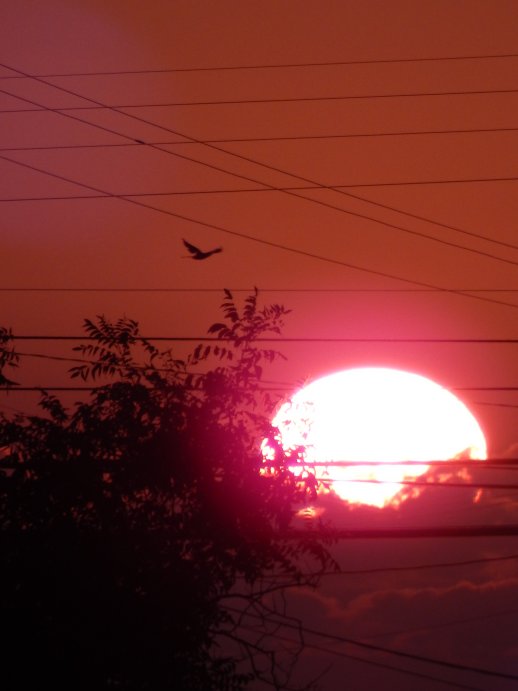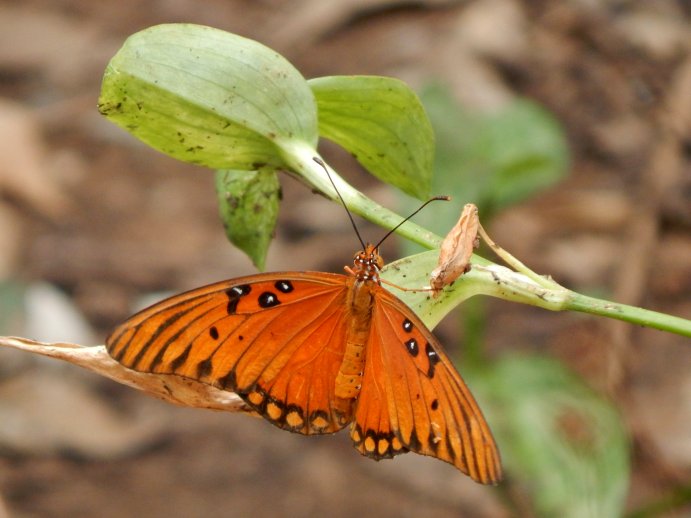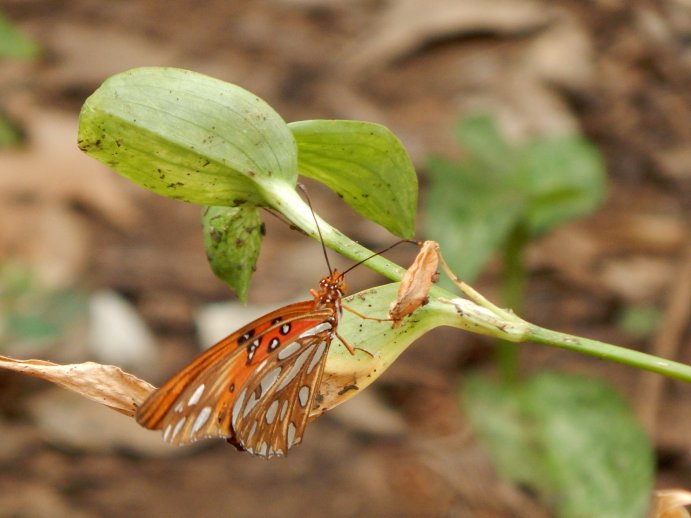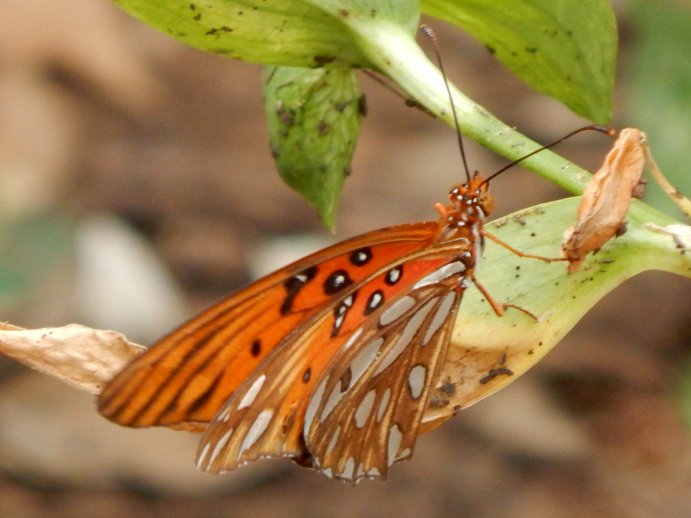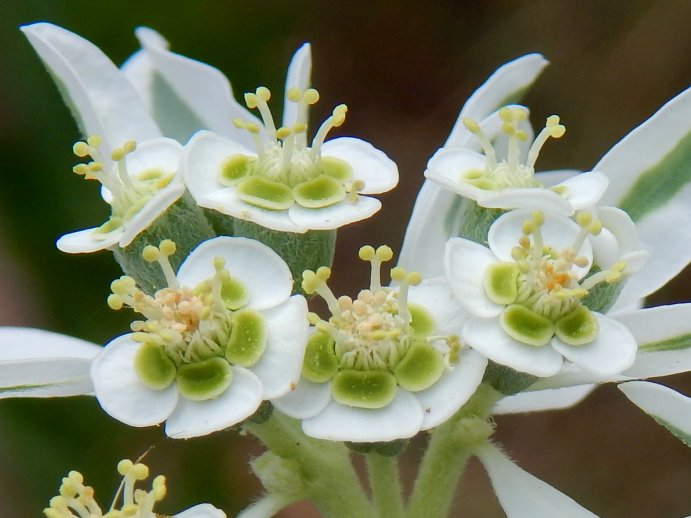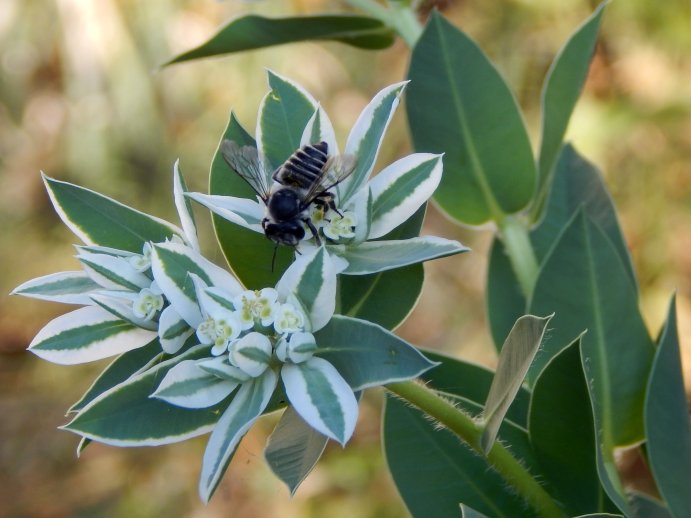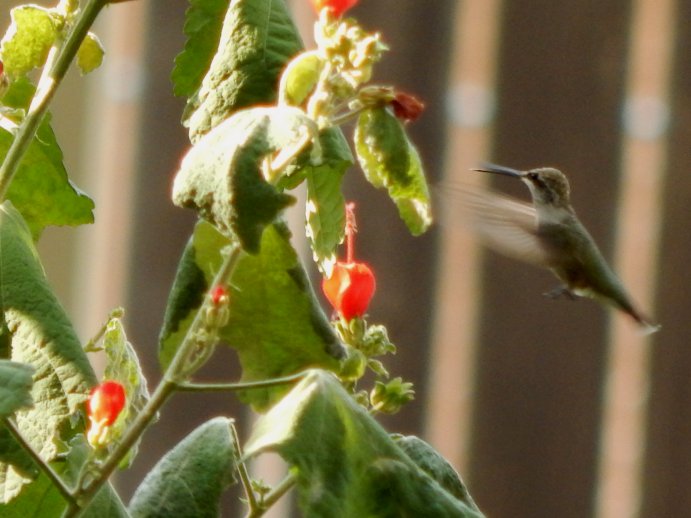Lately it seems that before I can turn around, another month has gone by. Does it appear that way to everyone else? I’ve always heard that the older you get, the faster time flies. I hate to see what it might be like in another ten years! Anyway, it’s the first Wednesday of the month once again and time for Wildlife Wednesday, hosted by Tina and her blog My Gardener Says. I’ve been a bit neglectful of my blog over the past month. There really hasn’t been that much out of the ordinary wildlife in my garden and the hot temperatures have kept me mostly inside except for early mornings. The one example of wildlife really worth celebrating this month has to be the Ruby-Throated Hummingbirds (Archilochus colubris) that have been making their presence known. I hope you’ll excuse me if I go overboard!

Though I’ve had feeders out all summer, the Hummers have been busy ignoring them and keeping themselves busy feeding on the flowering plants, most notably Trumpet Vine (Campsis radicans) and Turk’s Cap (Malvaviscus arboreus). The blooms on both of these have about gone to the wayside, finally inducing these little garden denizens to take a chance on the magic liquid contained in the feeders.

Have you ever just settled down in a chair in front of a window or on the porch and watched Hummingbirds go about their business? If you haven’t then you’re really missing out on a spellbinding experience. These little (immature) guys or gals have been zipping around our garden, chasing each other and visibly staking out their territories.

Once they find a prime feeding area they stick close by, usually within just a few feet or so of a feeder.

They invariably perch on the same little twig in order to keep an eye on their food source.

If another of their kind happens by, a wonderful-to-watch chase scene ensues. If only I could have captured one such flight with my camera! I envy those who’ve been able to do so.

The Texas Parks and Wildlife Department conducts an annual survey of Hummingbirds called the Texas Hummingbird Roundup.

For those of you living in Texas here’s a link to information about the Texas Hummingbird Roundup as well as a link to the Texas Hummingbird Roundup Backyard Survey.
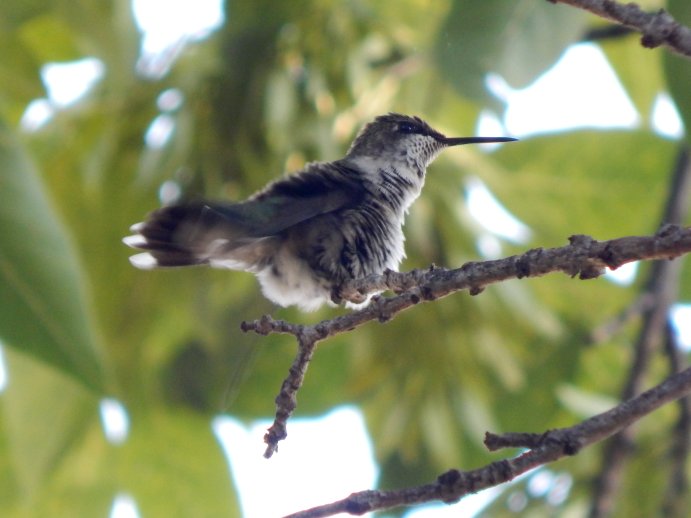
While I see Ruby-throated Hummingbirds throughout the day, they seem to be most active in the early morning and late evening.

Look at the length of that bill!

They’re such tiny birds, measuring from about 2.8 inches to to 3.5 inches in length and weighing just fractions of an ounce!

For information on the Ruby-throated Hummingbird be sure to visit this page at the Cornell Lab of Ornithology website.
So what other wildlife did I see in my garden this month? Here are a few other birds…
…a Carolina Wren (Thryothorus ludovicianus) hopping around on some deck furniture. For being so small, these birds have a very loud voice. Carolina Wren pairs stay together for life!

…a White-winged Dove (Zenaida asiatica) sunbathing. The colors of this bird’s feathers form quite a contrast. Many birds exhibit colors in flight, or in a posture such as this, that you don’t normally see when they’re just perching on a utility wire or hopping around on the ground. White-winged Doves are now seen as far north as Alaska!

…a European Starling (Sturnus vulgaris) in the transitional juvenile form. Starlings can learn the calls of up to twenty other species of birds!

…a couple of juvenile Northern Mockingbirds (Mimus polyglottos). We didn’t seem to have many Mockingbirds this summer, yet young ones are beginning to prance around the yard in numbers. These two have been keeping fast company — perhaps they’re siblings? — and still exhibit some speckling on their upper breast and throat areas. Mockingbirds feed on insects and fruit!

And here are a few bugs…
…an Eastern Pondhawk (Erythemis simplicicollis) Dragonfly. I haven’t seen as many Dragonflies lately, but this one hung around long enough for me to take a few pictures.

…and a Pearl Crescent (Phyciodes tharos) Butterfly. These seem to come and go in small bunches. They visit for a while, disappear, then return.
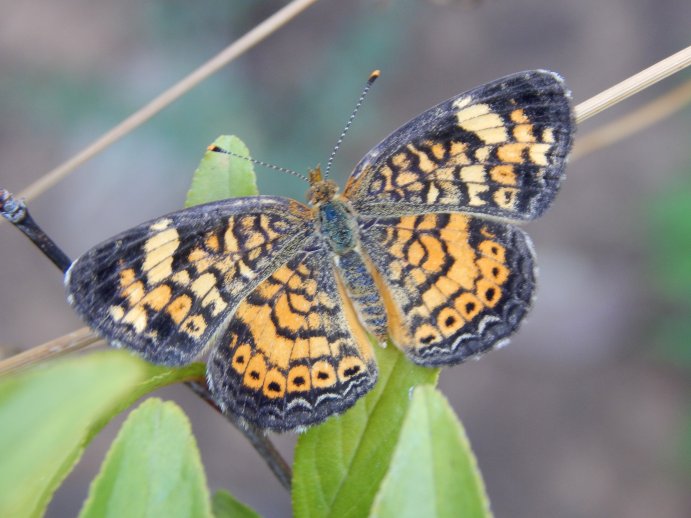
That’s my Wildlife Wednesday post for September 2015. Please check out Tina and her blog My Gardener Says for more Wildlife Wednesday posts!
